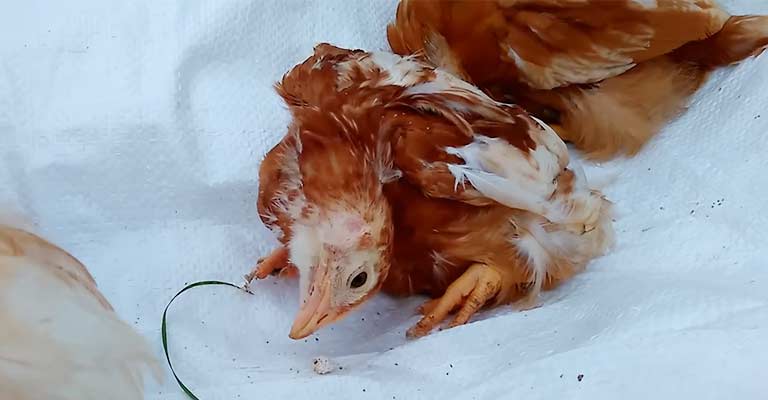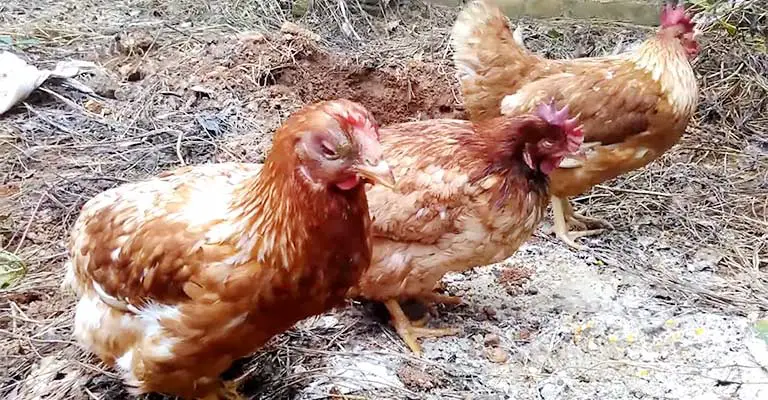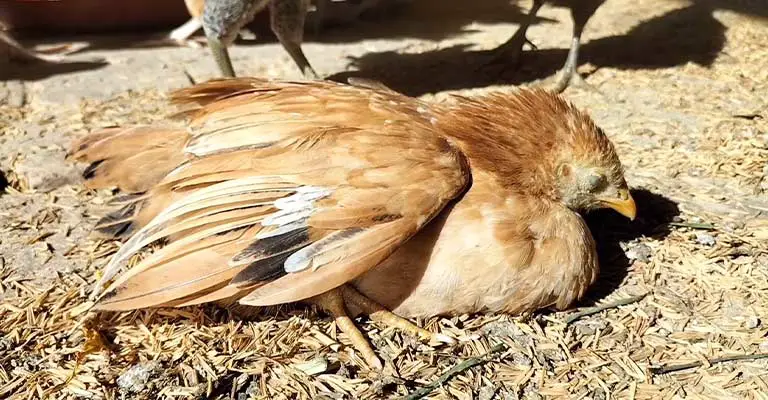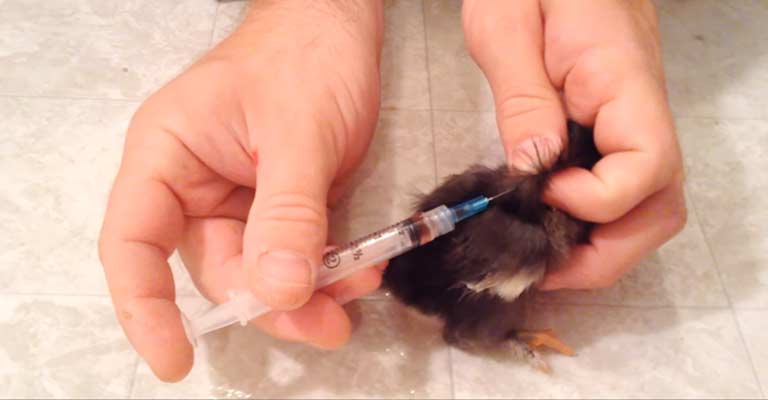In the realm of avian health, the Newcastle viral infection stands as a formidable threat, captivating the attention of researchers, veterinarians, and bird enthusiasts alike.
Named after the city in England where it was first identified in the 1920s, this highly contagious and potentially fatal disease has since spread its wings globally, affecting a diverse range of bird species.
The Newcastle virus, classified within the avian paramyxovirus serotype 1, poses a significant challenge to poultry industries, conservation efforts, and wild bird populations.
As we delve into the intricacies of this viral menace, this article aims to unravel the mysteries surrounding the Newcastle viral infection in birds, exploring its origins, modes of transmission, and the ongoing efforts to mitigate its impact on our feathered companions.
Join us on a journey through the fascinating world of avian health, where the quest for understanding and controlling the Newcastle virus continues to unfold.

Newcastle Viral Infection in Birds
The Newcastle viral infection, a highly contagious and potentially devastating disease, has long been a focal point in the realm of avian health.
Originating in Newcastle, England, in the 1920s, the virus, officially classified as avian paramyxovirus serotype 1, has since become a global concern, affecting a diverse array of bird species.
Origins and Spread
The journey of the Newcastle virus begins with its initial identification in poultry flocks in Newcastle, leading to the nomenclature. Since then, it has demonstrated a remarkable ability to traverse geographical boundaries and species barriers.
Domestic poultry, ranging from chickens to turkeys, are particularly susceptible, but the virus does not spare wild bird populations.
Migratory birds, in particular, play a significant role in the dissemination of the virus, highlighting the complex interplay between domesticated and wild avian communities.
Modes of Transmission
The Newcastle virus is primarily transmitted through respiratory secretions and feces. Infected birds shed the virus in their excretions, contaminating the environment and exposing susceptible individuals.
Additionally, the virus can spread through contaminated feed, water, and equipment. The ease of transmission, coupled with the virus’s ability to persist in the environment, contributes to its rapid spread within and between bird populations.
Clinical Manifestations

The clinical manifestations of Newcastle viral infection vary widely, ranging from subclinical infections to severe respiratory and nervous system disorders. Affected birds may exhibit respiratory distress, coughing, sneezing, and nasal discharge.
In severe cases, neurological symptoms such as tremors, paralysis, and twisted necks may manifest. The variability in clinical signs complicates early detection, underscoring the importance of vigilant surveillance.
Economic Impact on Poultry Industries
The economic impact of the Newcastle virus on poultry industries is substantial. Outbreaks lead to significant mortality rates, decreased egg production, and compromised meat quality.
The culling of infected and susceptible birds, along with trade restrictions imposed on affected regions, further exacerbates economic losses.
The globalized nature of the poultry trade amplifies the economic consequences, emphasizing the need for coordinated international efforts in disease management.
Control and Prevention Strategies
Efforts to control and prevent Newcastle viral infections center around vaccination, biosecurity measures, and surveillance. Vaccination plays a crucial role in reducing the severity of outbreaks and limiting viral spread.
However, selecting appropriate vaccine strains is paramount, given the virus’s genetic diversity. Strict biosecurity measures, including quarantines, disinfection protocols, and restricted access to poultry facilities, are essential to prevent the introduction and spread of the virus.
Surveillance programs, encompassing both domestic and wild bird populations, aid in early detection and response, mitigating the impact of outbreaks.
Ongoing Research and Challenges
Despite advancements in Newcastle virus research, challenges persist. Genetic variations in the virus demand constant monitoring to adapt vaccination strategies effectively.
Additionally, the virus’s ability to evolve and generate new strains poses an ongoing threat, requiring continuous research efforts to stay ahead of potential outbreaks.
What Are The Symptoms Of Newcastle Disease In Birds?

Newcastle disease, caused by the avian paramyxovirus serotype 1 (APMV-1), commonly referred to as Newcastle virus, is a highly contagious and potentially devastating viral infection that affects birds.
The symptoms of Newcastle disease can vary widely depending on the strain of the virus, the species of birds affected, and the presence of any pre-existing immunity.
Here, we delve into the diverse spectrum of clinical manifestations associated with Newcastle disease in birds.
Respiratory Symptoms
Respiratory distress is a hallmark sign of Newcastle disease. Infected birds may exhibit labored breathing, coughing, sneezing, and nasal discharge. These respiratory symptoms often lead to a decline in overall respiratory function.
In severe cases, affected birds may gasp for air and respiratory distress can be accompanied by wheezing sounds.
Gastrointestinal Symptoms
Newcastle disease can also impact the gastrointestinal tract of infected birds. Common gastrointestinal symptoms include greenish diarrhea and a decrease in feed and water consumption. The digestive issues contribute to weight loss and can further weaken the birds’ overall health.
Nervous System Symptoms
One of the distinguishing features of Newcastle disease is its neurotropic nature. Neurological symptoms may manifest in infected birds, ranging from mild signs to severe neurological disorders.
Birds with neurological involvement may exhibit head tremors, paralysis of wings or legs, circling behavior, and a twisted neck (torticollis). The severity of neurological symptoms depends on the strain of the virus and the susceptibility of the bird species.
Reproductive Symptoms
In laying hens, Newcastle disease can impact reproductive performance. Infected birds may experience a drop in egg production, and the quality of eggs may be compromised. The virus can also affect the reproductive organs, leading to a decrease in fertility and hatchability.
Ocular Symptoms
Ocular manifestations of Newcastle disease include conjunctivitis and swelling around the eyes. Affected birds may appear lethargic and have difficulty keeping their eyes open.
Ocular symptoms can contribute to overall discomfort and compromise the bird’s ability to feed and navigate its environment.
Subclinical Infections
Not all birds infected with Newcastle virus exhibit overt clinical symptoms. Some may experience subclinical infections, showing no apparent signs of illness.
However, even birds with subclinical infections can shed the virus and contribute to its spread. Subclinical carriers are a significant challenge in disease control, as they can unknowingly introduce the virus to new flocks.
Variable Severity
The severity of Newcastle disease can vary not only between individual birds but also between different bird species.
While some species may experience high mortality rates during outbreaks, others may show milder symptoms or remain asymptomatic carriers.
Factors such as age, stress, immune status, and the presence of concurrent infections influence the course and severity of Newcastle disease in a given population.
Chronic Form
In some cases, Newcastle disease can take on a chronic form, characterized by persistent or recurring symptoms.
Birds with chronic Newcastle disease may continue to shed the virus over an extended period, contributing to ongoing transmission. The chronic form of the disease poses unique challenges for disease management and eradication efforts.
Is There A Vaccine For Newcastle Disease?

Vaccination is a crucial and effective strategy in the control and prevention of Newcastle disease (ND) in poultry.
The development and administration of vaccines have played a significant role in reducing the severity of outbreaks and limiting the economic impact of this highly contagious viral infection.
Types of Newcastle Disease Vaccines
Several types of Newcastle disease vaccines are available, each designed to address specific challenges associated with the virus. These vaccines can be broadly categorized into live attenuated vaccines, inactivated vaccines, and vector vaccines.
Live Attenuated Vaccines
Live attenuated Newcastle disease vaccines are created by weakening the virulent strain of the virus. These vaccines are administered to birds in a live but weakened form. They stimulate a robust immune response, providing both humoral and cellular immunity.
Live vaccines are known for their ability to confer long-lasting protection with a single dose. However, there is a risk of reversion to virulence, albeit minimal, and these vaccines may not be suitable for use in the presence of maternal antibodies.
Inactivated Vaccines
Inactivated or killed Newcastle disease vaccines are developed by inactivating the virus with chemicals or heat. While they do not carry the risk of reversion to virulence, inactivated vaccines may require multiple doses to establish and maintain immunity.
Inactivated vaccines are often used in breeder flocks to enhance maternal antibody transfer to progeny. These vaccines are considered safe and are suitable for use in the presence of maternal antibodies.
Vector Vaccines
Vector vaccines use a different virus, such as a modified Newcastle disease virus or a non-pathogenic avian virus, as a vector to express Newcastle disease virus antigens.
This approach combines the benefits of live vaccines’ ability to induce a strong immune response with the safety of killed vaccines.
Vector vaccines are designed to minimize the risk of reversion to virulence, and they have shown promise in providing effective and safe protection against Newcastle disease.
Vaccination Strategies
The choice of vaccination strategy depends on factors such as the prevalence of Newcastle disease in a region, the specific strain of the virus, the type of poultry operation, and the presence of maternal antibodies. Common vaccination strategies include:
Mass Vaccination
Mass vaccination involves vaccinating entire flocks to build immunity and prevent the spread of the virus within poultry populations.
Live attenuated or inactivated vaccines may be used in mass vaccination programs, and the timing and frequency of vaccinations depend on factors such as the risk of exposure and the presence of maternal antibodies.
Parental Vaccination
Parental vaccination involves vaccinating breeder hens to passively transfer antibodies to their offspring through the egg.
This strategy is crucial for protecting young chicks during their vulnerable early weeks. Inactivated vaccines are often used in breeder flocks to enhance maternal antibody levels.
Boosting Programs
To ensure continued protection, especially in the face of evolving virus strains, booster vaccinations may be implemented.
Boosting programs involve administering additional vaccine doses to maintain and reinforce immunity in poultry populations.
Global Vaccination Efforts
On a global scale, vaccination campaigns have been instrumental in controlling Newcastle disease and reducing its impact on poultry industries.
International organizations, governmental agencies, and private entities collaborate to implement vaccination programs tailored to regional needs and challenges.
These efforts contribute not only to the welfare of domestic poultry but also to the conservation of wild bird populations by minimizing the risk of transmission between domestic and wild avian communities.
FAQs
What are the primary symptoms of Newcastle viral infection in birds?
The symptoms of Newcastle viral infection in birds can vary widely, but common indicators include respiratory distress, coughing, sneezing, and nasal discharge.
How is the Newcastle virus transmitted among bird populations?
The Newcastle virus is primarily transmitted through respiratory secretions and feces. Infected birds shed the virus, contaminating the environment. Additionally, the virus can spread through contaminated feed, water, and equipment.
What measures can be taken to prevent Newcastle viral infection in poultry farms?
Prevention strategies include vaccination, strict biosecurity measures, and surveillance. Vaccination helps reduce the severity of outbreaks, but choosing appropriate vaccine strains is crucial due to the virus’s genetic diversity.
How does Newcastle viral infection impact the poultry industry economically?
Newcastle viral infections can have a significant economic impact on the poultry industry. Outbreaks lead to increased mortality rates, decreased egg production, and compromised meat quality.
Why is international collaboration crucial in managing Newcastle viral infections?
International collaboration is essential due to the global nature of the poultry industry and the migratory patterns of wild birds. Sharing information, resources, and expertise facilitates a more comprehensive understanding of the virus and enhances collective preparedness.
Conclusion
The Newcastle viral infection remains a critical concern in the intricate tapestry of avian health. As we navigate the complexities of this highly contagious disease, it becomes evident that a collaborative and multidisciplinary approach is essential for effective prevention and control.
The strides made in research, diagnostics, and vaccination strategies provide a glimmer of hope, yet challenges persist in the face of evolving viral strains and globalized trade networks.
The Newcastle virus underscores the interconnectedness between domestic and wild bird populations, necessitating ongoing vigilance in surveillance and biosecurity measures.
As we look toward the future, continued research, international cooperation, and proactive measures are crucial to safeguarding avian populations from the threat of Newcastle viral infection.
Through our collective efforts, we can aspire to create a world where birds can thrive, free from the shadow of this pervasive and potentially devastating disease.